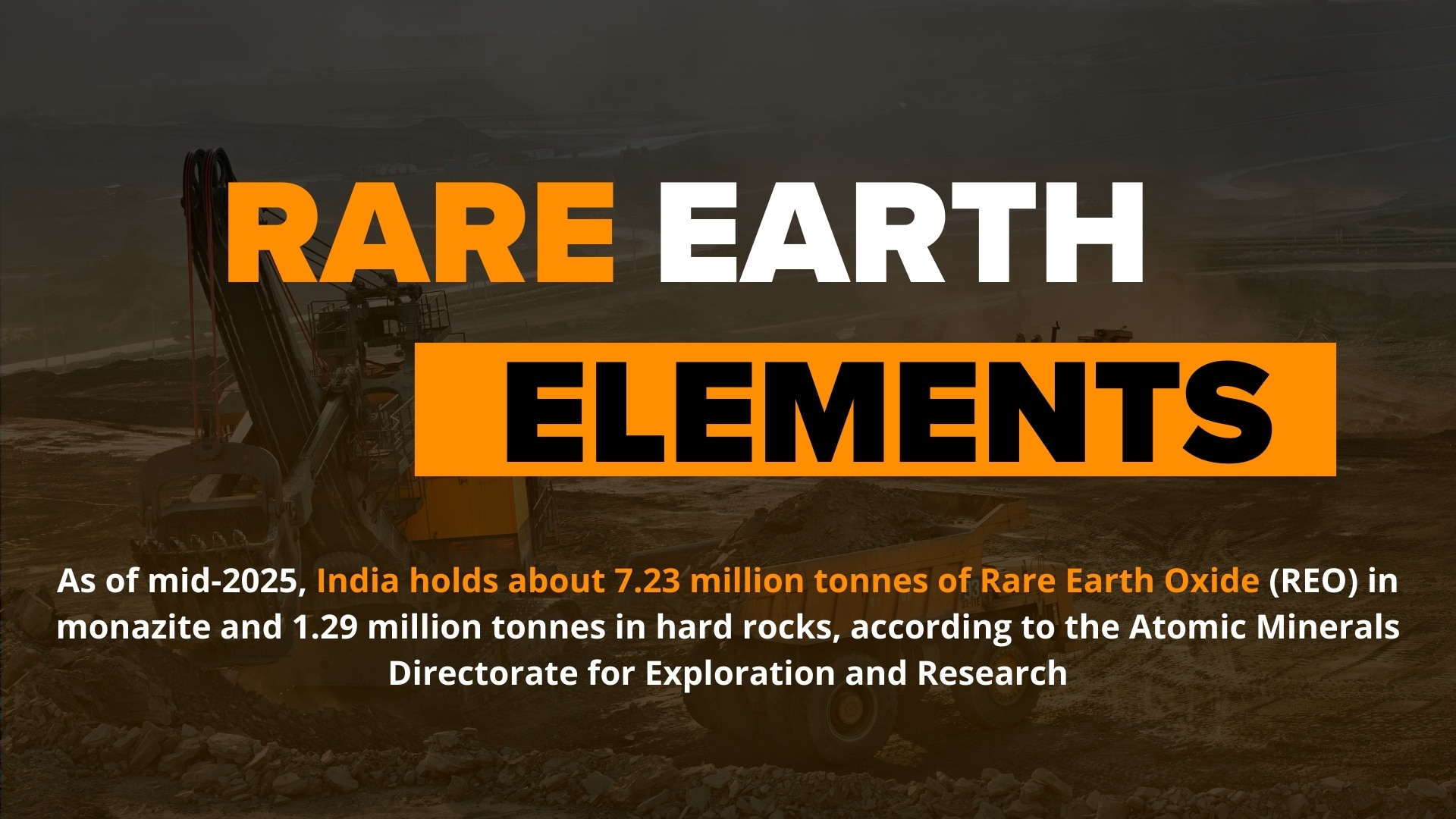
Mineral Wealth of North-Eastern India: Strategic Reserves and Future Prospects
Overview The North-Eastern states of India—Assam, Arunachal Pradesh, Meghalaya, Manipur, and Nagaland—are endowed with significant reserves of rare earth elements (REEs) and critical minerals such as graphite, vanadium, lithium, and cobalt. These resources are essential for the manufacture of batteries, semiconductors, and advanced alloys, positioning the region as a potential powerhouse for India’s technological and industrial future.
Arunachal Pradesh: A Hub of Strategic Minerals
Lithium Brine Discovery
The Geological Survey of India (GSI) has identified what could become India’s first lithium brine prospect in Arunachal Pradesh, near the border with China, as well as in Nagaland and Assam. Lithium brine, which consists of salty underground water containing dissolved lithium salts, is a crucial source for lithium extraction—a key component in battery technology. While this discovery may not immediately disrupt global markets, it marks a strategic shift with long-term implications for supply chains, pricing, and geopolitical leverage. It also presents an opportunity for India to challenge the dominance of the “Lithium Triangle” (Chile, Argentina, Bolivia) and Australia’s hard rock mines.
Vanadium and Graphite Reserves
Arunachal Pradesh boasts 13.8 million tonnes of vanadium reserves, India’s first major find of this alloying element, and over 17.9 million tonnes of graphite deposits suitable for lithium-ion battery production. The state has also emerged as India’s most significant domestic source of natural flake graphite, with 24.8 million tonnes confirmed. These high-quality deposits are ideal for use in battery anodes, lubricants, and advanced composites. Vanadium, often found alongside graphite, is critical for aerospace applications and vanadium redox flow batteries, which offer scalable solutions for grid-level energy storage.
Rare Earth Elements (REEs)
REE anomalies have been identified across Arunachal Pradesh, Assam, and Meghalaya. Assam alone holds 28.6 million tonnes of REEs. In Arunachal’s Pakke Kessang district, near the Pakke Tiger Reserve, the Lodoso area contains 2.2 million tonnes of REEs, including significant concentrations of neodymium, which is vital for permanent magnets used in electric vehicles and wind turbines.
Assam and Meghalaya: REE and Bauxite Potential
Jashora Alkaline Complex
Assam’s Karbi Anglong district is home to the Jashora Alkaline Complex, which contains 28.6 million tonnes of REEs. This makes Assam a standout player in India’s quest for strategic minerals.
Sung Valley and Bauxite Deposits
Meghalaya’s Sung Valley, located about 45 km east of Shillong, features an ultramafic-alkaline-carbonatite complex with potential for laterite-hosted REE extraction. The West Khasi Hills have

also revealed lateritic bauxite deposits enriched with iron and titanium. Some bauxite caps in this region have shown anomalous REE values, offering opportunities for dual-commodity extraction—industrial and strategic minerals from a single resource.
Nagaland and Manipur: Cobalt and Nickel Prospects
Nickel and cobalt, found within the ophiolite belts of Nagaland and Manipur, are attracting attention for their potential role in India’s battery supply chain. These metals, present as trace elements in lateritised ultramafic rocks, require advanced beneficiation techn
iques. The Mollen-Washello area in Nagaland’s Phek district, near the Indo-Myanmar border, is particularly promising for nickel-cobalt-chromium exploration, positioning Nagaland as a high-potential state for future critical mineral development.
Challenges and Prospects
Despite the region’s mineral wealth, development has been hampered by difficult terrain, limited infrastructure, and regulatory complexities. Most mining activities are yet to commence, with prospecting licenses granted to over 20 companies in Arunachal Pradesh alone. The extraction and processing of these minerals will require significant investment in technology, infrastructure, and environmental safeguards.
However, the strategic importance of these resources cannot be overstated. With the right policies and investments, the North-Eastern states could become central to India’s ambitions in clean energy, advanced manufacturing, and supply chain security. The region’s mineral reserves offer not only economic opportunities but also the potential to enhance India’s geopolitical standing in the global race for critical minerals.